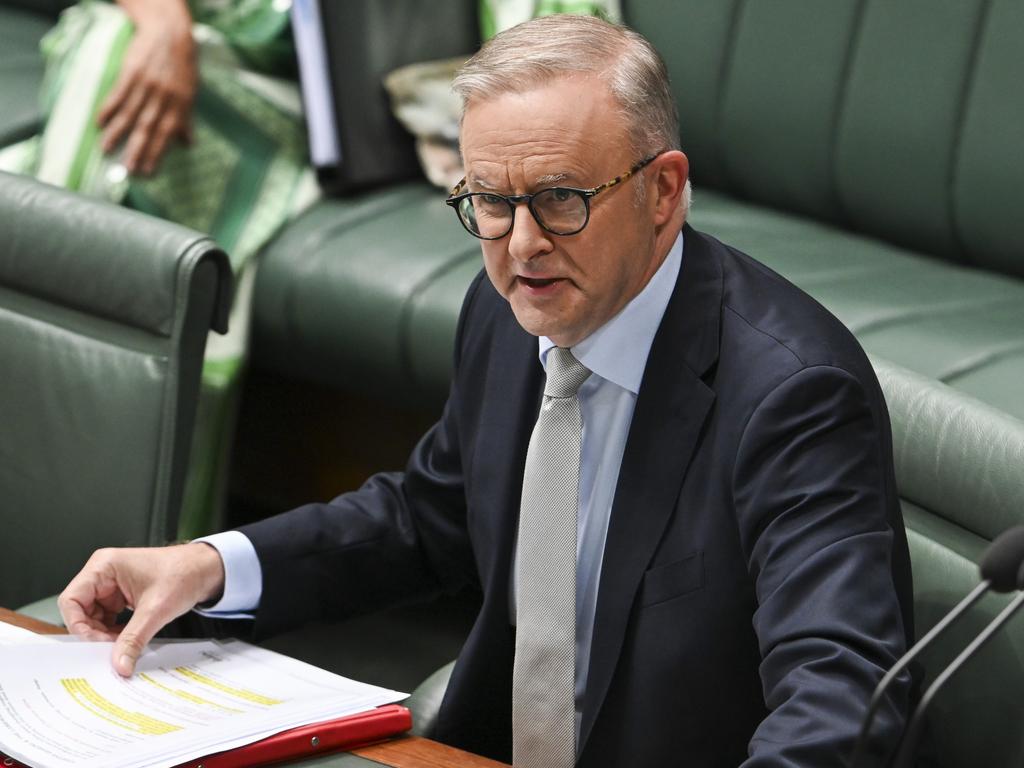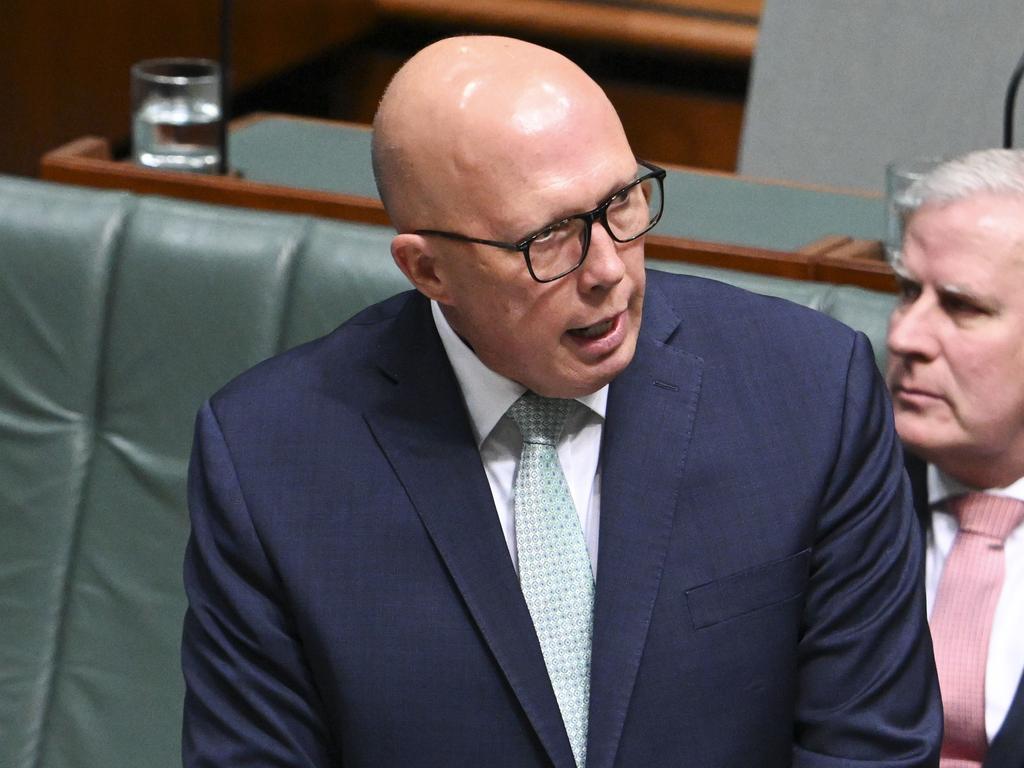What the newly passed stage three tax cuts mean for Aussies
Millions of dollars will start to flow to Aussie workers from July 1 after the overhauled stage three tax cuts were passed in parliament. See what it means for you.
Labor’s overhauled stage three tax cuts have passed the parliament meaning millions of dollars will start to flow to Australian workers from July 1.
Despite breaking an election promise to redirect money toward low and middle income Australians at the expense of higher earners, polls have consistently shown majority support within the community for the changes.
The Coalition under Opposition leader Peter Dutton ultimately backed the stage three changes, as did the Greens and independent crossbenchers who all said they did not want to stand in the way of extra money for workers.
The federal government has claimed this as a major electoral win, but even though many Australians prefer the stage three 2.0 package the change has not lead to an increase in support for Labor.

WHAT ARE THE STAGE THREE TAX CUTS?
Stage one: A temporary low and middle-income offset (LMITO) worth up to $1,080 a year to taxpayers earning between $30,000 and $126,000 that expired in 2022.
Stage two: From July 1, 2020, raised the 32.5 per cent marginal tax bracket from $37,001 – $90,000, to now $45,001 – $120,000
Original Stage three (now scrapped): from July 1, 2024, abolish the 37 per cent marginal tax bracket completely and lowers the 32.5 per cent rate to 30 per cent. It also raises the threshold for the 45 per cent marginal tax rate from $180,000 to $200,000. This means everyone earning between $45,000 and $200,000 will pay the same 30 cents in the dollar tax rate.
New Stage three: from July 1, 2024, slash the lowest tax bracket rate from 19 per cent to 16 per cent, keep the 37 per cent bracket but have it start at $135,000 and make the 45 per cent bracket start from $190,000.
WHAT DO THE TAX BRACKETS LOOK LIKE UNDER LABOR’S STAGE THREE PACKAGE?
$18,200 or below: no tax
$18,201 to $45,000 – 16 per cent tax
$45,001 to $135,000 – 30 per cent tax
$135,001 to $190,000 – 37 per cent tax
$190,001 or higher – 45 per cent tax
WHAT DOES THAT LOOK LIKE AS A TAX SAVING?
Compared to the current tax brackets as of the 2023-24 financial year:
A person earning $50,000 would save $929 a year, a significant increase on the $125 they were due to receive under the original stage three plan.
A person earning $90,000 would save $1,929 a year, up from the originally promised $1,125.
A person earning $110,000 would save $2,429 a year, compared to only $1,625 under the old Coalition plan.
A person earning $140,000 would save $3,729 a year, slightly up from the $3,275 they would have got back under the old stage three.

All workers earning about $146,000 or less would get a larger tax cut than under the original stage three plan, while anyone earning above that would get a smaller return than was first legislated in 2019.
For example a person earning $160,000 would save $3,729, but under the Coalition’s stage three tax cut they would have saved $4,675 a year.
A person on $200,000 would save $4,529, but under the old stage three they were in line to receive $9,075 a year.
WHERE DID THE ORIGINAL STAGE THREE PLAN COME FROM?
The former Morrison government developed a three stage tax cut plan in 2019, which was legislated by the then-Coalition majority parliament.
Labor supported the legislation at the time, though reserved the right to amend stage three, which was not due to take effect for five years.
The Coalition argued all stages were needed to stimulate the economy and address “bracket creep”.
WHEN DID LABOR CHANGE ITS MIND?
Anthony Albanese decided to back stage three going into the 2022 federal election, and spent the next 18 months publicly committing to the package saying Labor’s position on the cuts “hasn’t changed”.
In December 2023 he and Treasurer Jim Chalmers tasked treasury and finance officials with looking into ways to ease cost of living pressures for Australians.
Mr Chalmers later confirmed he felt by the Christmas and Summer period the originally stage three legislated cuts could be “delivered in a better way”.
The Prime Minister continued to insist his position on the package had not changed, saying in early January “we are committed to that” when asked about delivering the cuts in full.
A few days later on January 24, Mr Albanese confirmed his cabinet and party room had resolved to change the stage three package.
DID LABOUR BREAK AN ELECTION PROMISE?

Yes. Mr Albanese went to the 2022 election promising to deliver the original stage three plan and has not done so.
Labor has argued changing circumstances, such as high inflation, wars in Ukraine and the Middle East and other cost of living issues meant it was no longer tenable to keep the cuts as legislated in 2019.
The PM and other Labor MPs have said they are happy to have the political fight about breaking an election promise as doing so enabled them to deliver a greater tax cut to 85 per cent of Australian workers.
WHAT IS BRACKET CREEP?
This is where a pay rise leads to a person paying a bigger per cent of their income in tax as workers “creep” up the tax brackets.
Because tax brackets are not automatically adjusted for inflation, this means over time as an individual’s pay goes up their average tax rate increases because more of their pay is in their highest bracket.
DOES THE NEW VERSION OF STAGE THREE FIX THE BRACKET CREEP?
Labor has argued by reducing tax rates in lower brackets all Australians receive the benefit of bracket creep relief.
But the Coalition has said the purpose of the stages was to help all Australians over time, meaning with the changes people who are higher earners did not get the full bracket creep relief intended across the whole of the reform package.

WILL THE COALITION CHANGE STAGE THREE IF ELECTED?
No. Opposition leader Peter Dutton has confirmed he will not roll back the tax cuts for low and middle income earners, however he has pledged to unveil a “significant” tax reform package before the next federal election.
Mr Dutton said for the Coalition to keep Labor’s changes and reintroduce the flat 30 per cent tax bracket as was originally legislated with stage three would cost $9 billion, which he has said would be difficult to find in the budget.
More Coverage
Originally published as What the newly passed stage three tax cuts mean for Aussies




